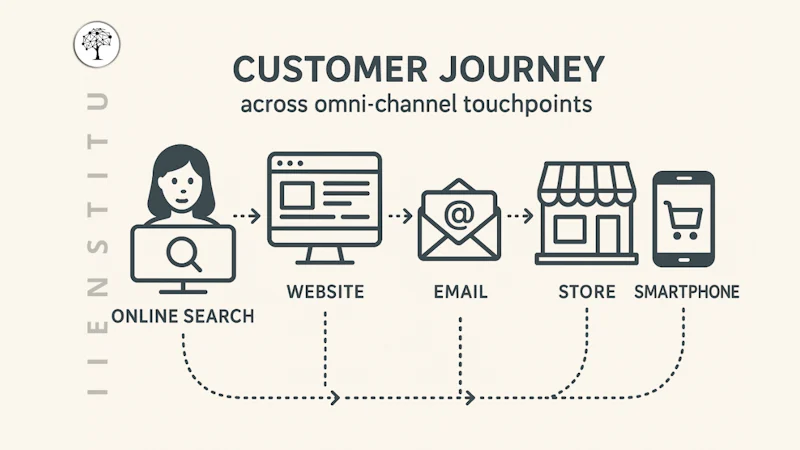2025 is shaping up to be a turning point for digital marketing. From AI-driven automation to mobile-first omni-channel experiences, the strategies that once gave brands a competitive edge are becoming baseline expectations. This year, marketers who embrace hyper-personalization, social commerce, and sustainable practices will outpace those stuck in old models.
In this guide, we’ll explore the most critical digital marketing trends of 2025—along with practical steps to help you stay ahead, build stronger customer trust, and future-proof your strategy.
1. AI-Powered Strategy and Personalization at Scale
Artificial intelligence has moved beyond experimentation. In 2025, AI is the backbone of digital marketing—driving smarter customer segmentation, predictive analytics, and hyper-personalized content delivery.
Marketers are now leveraging generative AI tools to create tailored landing pages, optimize ad creatives, and even generate SEO-ready blog content. The real gain is efficiency: campaigns that once required weeks of creative testing can now be deployed and optimized in hours.
✔️ Why it matters: Faster decision-making, deeper personalization, and reduced costs.
2. Mobile-First and Seamless Omni-Channel Experiences
With over 70% of online purchases happening on mobile devices, optimizing for mobile is no longer optional. Brands that thrive in 2025 deliver frictionless omni-channel experiences, where browsing, purchasing, and customer support work seamlessly across apps, websites, and in-store.
For example, a user might discover a product on Instagram, add it to a wishlist in your app, and complete the purchase on desktop—expecting the journey to feel consistent and intuitive.
✔️ Why it matters: Boosts conversions and customer loyalty.
👉 Related Source: How to Set Up Instagram and TikTok Shops.
3. Hyper-Personalization Meets Data Ethics
Consumers expect brands to “know them” without crossing the line into creepiness. In 2025, hyper-personalization means balancing data-driven insights with transparent privacy practices.
Smart CRM systems now integrate customer touchpoints into unified profiles, enabling marketers to deliver context-aware messages—from personalized product recommendations to behavior-triggered emails.
Yet, this comes with responsibility: respecting data regulations and being clear about how user data is collected. The winners will be the brands that combine personal relevance with customer trust.
✔️ Why it matters: Increases engagement while strengthening brand reputation.
4. Interactive Content: Video, Podcasts, and Beyond
Static content alone no longer captures attention. In 2025, short-form videos, live streams, and podcasts dominate engagement. Platforms like YouTube, TikTok, and Spotify are turning into commerce engines, where brands sell directly through interactive content.
Podcasts in particular are gaining traction, not just for thought leadership but also as storytelling tools that humanize brands. Meanwhile, shoppable videos let audiences purchase without leaving the stream.
✔️ Why it matters: Extends reach and creates authentic audience connections.
5. Social Commerce and Influencer Partnerships
Social platforms are now marketplaces. Features like Instagram Shopping and TikTok Shop are mainstream in 2025, with billions in sales flowing through these ecosystems.
But success in social commerce depends on authentic partnerships. Instead of mega-influencers, brands increasingly work with micro and nano-influencers, who bring credibility and niche authority.
✔️ Why it matters: Builds trust and drives higher conversion rates.
6. Sustainability as a Core Marketing Strategy
Today’s consumers expect brands to go beyond product features. They want to see commitment to sustainability and social responsibility. In 2025, digital campaigns that highlight eco-friendly practices, ethical sourcing, or social impact initiatives resonate strongly with buyers.
But beware of greenwashing. The key is authenticity: real commitments, transparent reporting, and visible impact. Companies that succeed in this area don’t just market sustainability—they integrate it into their identity.
✔️ Why it matters: Builds long-term loyalty and differentiates your brand.
7. Marketing Beyond Cookies: Zero and First-Party Data Strategies
As third-party cookies disappear, 2025 pushes marketers to rethink data collection. The future lies in zero-party data (information customers willingly share, like survey answers or preferences) and first-party data (interactions tracked directly on your website or app).
These strategies not only ensure compliance with privacy regulations but also strengthen customer trust. Brands that excel here will create deeper, more accurate personalization while reducing dependence on external platforms.
✔️ Why it matters: Future-proofs your targeting and respects user privacy.
8. Voice Search and Conversational Marketing
With the rise of Siri, Google Assistant, and Alexa, voice search is transforming how users find information. Instead of typing, customers now speak their queries, asking natural-language questions like, “Where can I buy sustainable running shoes near me?”
This requires optimizing content for voice SEO, focusing on conversational keywords and FAQ-style structures. Alongside this, AI chatbots provide real-time conversational support, making 24/7 customer service a new standard.
✔️ Why it matters: Captures voice-driven traffic and improves customer support efficiency.
Key Takeaways: 2025 in a Snapshot
The future of digital marketing revolves around smarter technology, ethical personalization, and meaningful brand values.
Here’s a quick checklist for implementation:
✅ Use AI to automate and personalize campaigns
✅ Prioritize mobile-first omni-channel design
✅ Build trust with transparent data practices
✅ Invest in interactive formats like podcasts and shoppable videos
✅ Leverage micro-influencers for authentic engagement
✅ Make sustainability part of your brand story
✅ Prepare for a cookieless world with zero/first-party data
✅ Optimize for voice search and conversational interactions
Building a 2025-Ready Marketing Strategy
So, what does all this mean for your marketing playbook in 2025?
Prioritize channels that match consumer behavior: mobile-first, AI-driven ads, social commerce, email, and video.
Leverage AI without overcomplicating it—start with content, chatbots, and email automation.
Rethink influencer marketing by focusing on authentic, long-term partnerships with micro and nano-influencers.
Double down on email as your most reliable, ROI-rich owned channel.
Create content that connects: short-form for attention, podcasts for depth, and interactive tools for engagement.
👉 The future of digital marketing isn’t about chasing every trend—it’s about choosing the right mix of tools and channels that align with your brand’s values and customer needs.
If you want to stay competitive in 2025, start implementing these shifts today.


